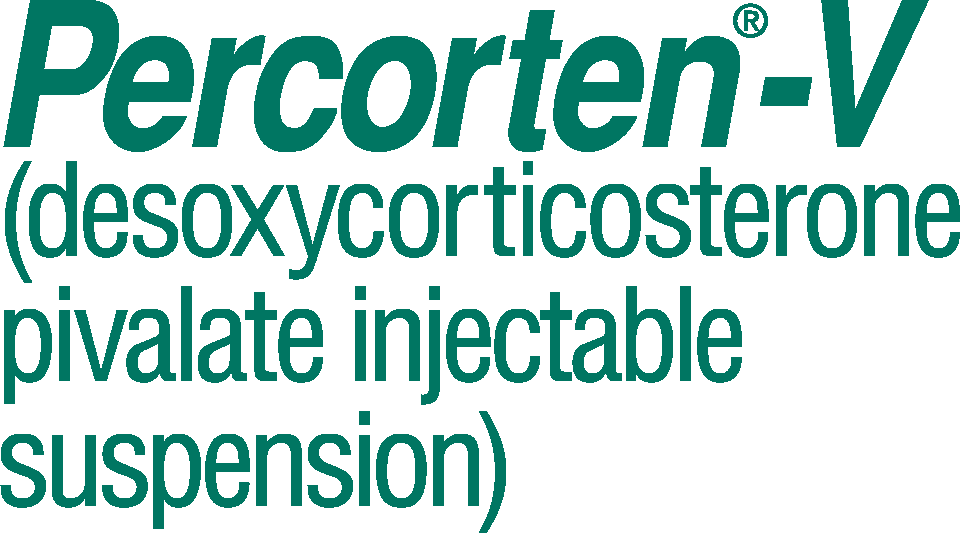
Percorten®-V (desoxycorticosterone pivalate injectable suspension)
Percorten-V is a FDA-approved treatment for canine Addison’s disease.
Why Choose Percorten-V?
A proven history of life-saving results
Canine Addison’s disease (hypoadrenocorticism) is characterized by inadequate production of glucocorticoids (cortisol) and/or mineralocorticoids (aldosterone) by the adrenal glands. If left untreated, the disease is life-threatening. As the first FDA-approved treatment for canine Addison’s disease*, Percorten-V continues to be a trusted solution that gives hope in the face of this challenging diagnosis.
*For use as a replacement therapy for the mineralocorticoid deficit in dogs with primary adrenocortical insufficiency.
Percorten-V Product Information
For use as a replacement therapy for the mineralocorticoid deficit in dogs with primary adrenocortical insufficiency.
Injectable Suspension
desoxycorticosterone pivalate
Indications
For use as a replacement therapy for the mineralocorticoid deficit in dogs with primary adrenocortical insufficiency.
Important Safety Information
Do not use in pregnant dogs or in dogs suffering from congestive heart failure, severe renal disease, or edema. Reduce dosage in dogs showing signs of hypernatremia or hypokalemia. Like other adrenocortical hormones, Percorten-V may cause severe side effects if dosage is too high or prolonged. The most common adverse reactions reported were depression/lethargy, vomiting, anorexia, polydipsia, and polyuria. Some of these effects may resolve with adjustments in dose or interval of Percorten-V or concomitant glucocorticoid administration. Please see the product label for full prescribing information.





